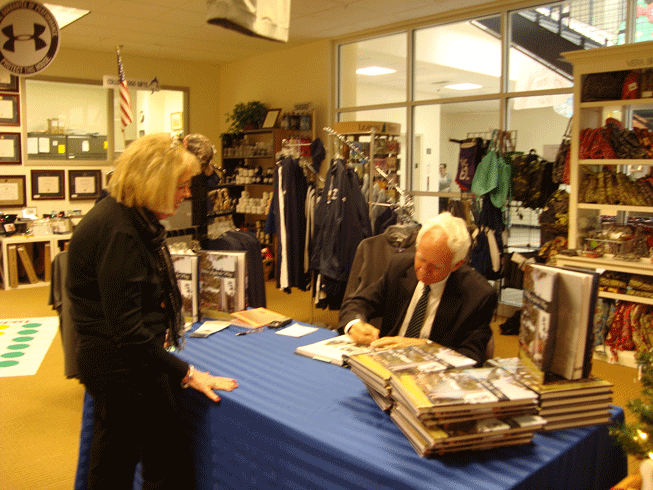Share this Story
A College Is Born; A Book Is Published
A College Is Born; A Book Is Published
College Archivist Dr. Stephen Mansfield releases the first comprehensive account of Virginia Wesleyan’s history — now available for purchase
By Leona Baker | December 14, 2010
It takes a certain amount of moxie to sign up to attend a college that doesn’t even exist. That’s precisely what the 41 pioneering members of the inaugural graduating class of Virginia Wesleyan did in 1966. The first generation of VWC faculty and staff, too, was called upon to devote itself to an idea that had yet to materialize in a physical sense.
“I think part of the intrigue is what’s involved in developing a curriculum,” explains Dr. Stephen Mansfield, College Archivist and former Wesleyan history professor and dean of the College, “putting out a catalog and recruiting students when there is no college — the kind of faith and commitment that people make.”
Mansfield, who has been with the College for 42 of its 50 years in existence, has watched this “powerhouse of a little place” evolve from a dream on paper to one of the nation’s preeminent liberal arts colleges. Several years ago, he began compiling the resource materials he would use to write the first comprehensive overview of the College’s history.
The result of his efforts, Wisdom Lights the Way: Virginia Wesleyan College’s First Half-Century (The Donning Company, $39.95), is now available for purchase in the campus bookstore. The publication of this beautiful, limited-edition 192-page volume commemorates the 50th anniversary of the College’s charter, which was obtained in 1961.
A sizable portion of the book is dedicated to those challenging early years, which might generously be described as “bumpy,” says Mansfield.
“It wasn’t just a place to work. You felt you were helping the school to mature and develop an identity.”—Stephen Mansfield
“Former President Lambuth Clarke used to say frequently that, had the College began even a couple of years after it did, it probably wouldn’t have survived, which was a way of saying that the 1960s and the 1970s were not an auspicious era in which to launch a college.”
In addition to the turbulent external political and social atmosphere of the era, the College dealt with the deaths of several key figures in the school’s formation, sizable fundraising obstacles and other challenges such as the selection of a suitable location. The fact that VWC was able to prevail — even receiving full accreditation from the Southern Association of Colleges and Schools in its first year of eligibility — and ultimately thrive is a testament to the perseverance and resourcefulness of the charter trustees, representatives of the Methodist Church, early faculty, staff, students and others.
“I think another way of characterizing the evolution of the College is to say that a great deal was accomplished in a relatively short amount of time,” says Mansfield.
He attributes that success to a variety of factors including VWC’s residential status and physical location, at once pastoral and on the border of two major cities as well as a host of business and cultural institutions with which the school quickly created lasting relationships. The College’s ability to attract students and highly qualified and dedicated faculty and to gain acceptance in the greater Hampton Roads community — even among those who may have been tempted to narrowly define the school based on its Methodist heritage — was also key.
 Then there was the sense of family, which has been a part of the Wesleyan experience since the beginning. Mansfield recognized it from his early years as a professor, when he actually lived on campus for a period of time, and later when his wife and young children came to think of the College as a home away from home.
Then there was the sense of family, which has been a part of the Wesleyan experience since the beginning. Mansfield recognized it from his early years as a professor, when he actually lived on campus for a period of time, and later when his wife and young children came to think of the College as a home away from home.
“It wasn’t just a place to work. You felt you were helping the school to mature and develop an identity.”
In this close-knit community, Wesleyan students tend to develop unusually lasting bonds not only with one another but with their faculty mentors. Mansfield still maintains ties with some of those early graduates. For Mansfield, the creation of the book was not only historical pursuit but a personal journey.
“It’s really been a joy. I’ve envisioned writing something like this for decades.”
In addition to a detailed account of Wesleyan’s various stages of growth and the many people whose involvement have made the College what it is today, the book contains approximately 270 photographs of important figures, places, campus life and monumental moments — from the late 1800s when the farm land that would become VWC was sold at auction to the present.
This unique memento, an excellent gift idea for alumni, faculty and friends, will serve as an important record and lasting tribute for years to come.

